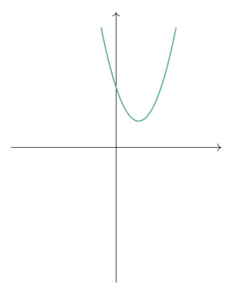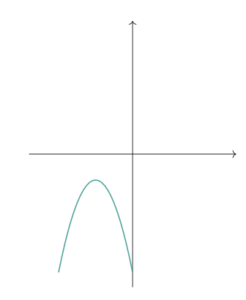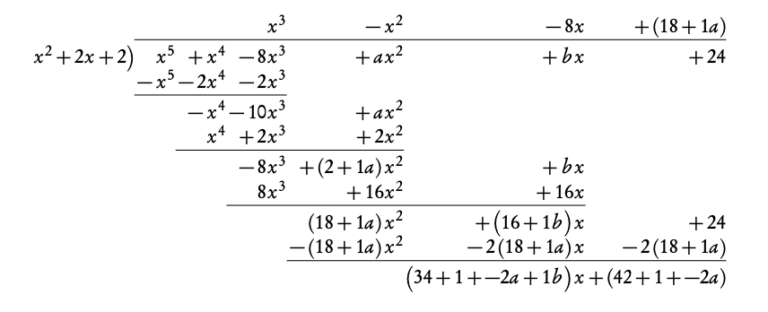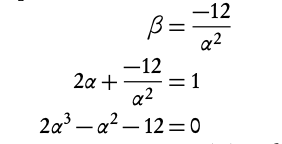The fundamental theorem of algebra any polynomial of degree n has n roots.
Note: some polynomials will have “double” or “triple” roots. Some may also have complex roots. Therefore a polynomial of degree 4 can have 4 real roots (of which 2, 3 or 4 could be the same) or 4 complex roots (of which 2, 3 or 4 could be the same) or 2 real and 2 complex roots.


x + 1 = ±i
(x + 1)2 = −1
x2 + 2x + 2 = 0
1. Since we know one factor of f (x), we can perform polynomial division to find other roots.

−2a − 12 = 0
a = −6
b + 16 − 2a − 36 = 0
b + 16 + 12 − 36 = 0
b = 8
x3 − x2 − 8x + (a + 18) = x3 − x2 − 8x + 12
−1 + i − 1 − i + β + α + α = −1/1
2α + β = 1
(−1 + i)(−1 − i) × β × α × α = (−1)5 × 24/1
2 × β × α × α = −24
β × α2 = −12


